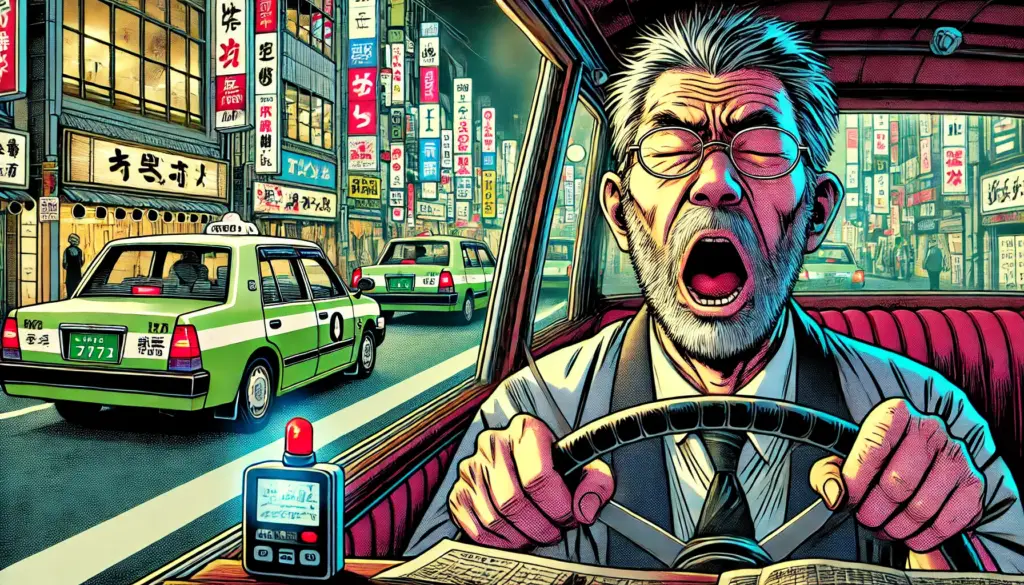
🚗 This article explores why ride-sharing in Japan looks very different from the rest of the world — and why regular citizens can’t drive for Uber.
🚕 The Uber You Know Doesn’t Exist in Japan
In most countries, Uber is synonymous with convenient, affordable rides offered by ordinary drivers using their personal vehicles. But step into Japan, and you’ll quickly notice something different: all Uber rides are operated by licensed taxi drivers. No freelancers. No students looking for a side gig. No weekend drivers.
Why is Uber in Japan more like a high-tech taxi-hailing service than the disruptive gig economy model it pioneered elsewhere?
To understand this, we need to unravel Japan’s complex web of legal restrictions, industry protections, and political interests.
📜 The Law Forbids Ordinary Ride-Sharing
At the heart of the issue is Japan’s Road Transportation Act, which strictly prohibits unlicensed individuals from transporting passengers for a fee. In legal terms, offering rides without a taxi license falls under the category of “shirataka” (白タク) — an illegal taxi business.
Even if a driver simply uses an app to find passengers, accepting money for a ride without proper authorization can result in severe penalties:
- Up to 3 years in prison
- A fine of up to ¥3 million (~$20,000 USD)
- Vehicle seizure and loss of driver’s license
This is not a light slap on the wrist. The government treats shirataka as a serious offense, particularly because it’s seen as both a safety issue and a threat to the traditional taxi industry.
🛡️ A Protected Industry with Deep Roots
Japan’s taxi industry is heavily regulated, with strict requirements for driver training, vehicle inspections, and fare settings. This is part of the reason why Japanese taxis are often seen as:
- Clean and professional
- Punctual and safe
- Exceptionally expensive 💸
But there’s another reason the rules remain strict: political protection.
Taxi companies — particularly powerful in cities like Tokyo and Osaka — have strong ties with lawmakers. Many Diet members (Japan’s national legislators) have long-standing relationships with regional taxi associations, some of which are influential political donors.
As a result, legislative attempts to liberalize ride-sharing laws have repeatedly stalled. Even when public opinion or corporate lobbying pushes for change, the political cost of upsetting the taxi lobby is considered too high by many politicians.
💰 Why Are Taxis in Japan So Expensive?
Japan has some of the highest taxi fares in the world. Here’s why:
- Meter starts high: In Tokyo, the base fare starts at around ¥500 for the first 1 km (~$3.50 USD).
- No price competition: Fares are set by regional government regulations, meaning companies cannot undercut each other.
- High overhead costs: Taxi companies must comply with rigorous maintenance, insurance, and employee welfare requirements.
- Scarcity model: In rural areas or late-night hours, the lack of competition keeps fares inflated.
So while the experience of taking a taxi in Japan is generally pleasant, the price tag often shocks visitors — especially those used to Uber or Grab in Southeast Asia.
💼 The Political Wall Blocking Change
Despite growing public frustration, the ride-share conversation in Japan continues to hit a wall.
In 2023 and 2024, several regional experiments were launched to test limited ride-share models in depopulated areas with transportation shortages. These pilot programs allowed general drivers to offer rides in specific regions under strict regulation.
However, proposals to expand these models to urban centers like Tokyo or Osaka have been fiercely opposed by taxi associations and their political allies.
There is also a generational divide: while younger Japanese and tourists favor cheaper, more flexible transport, older voters — a powerful demographic — tend to support existing structures that emphasize safety and reliability.
🌐 Japan’s Tech Giants Are Watching from the Sidelines
Interestingly, Japan’s own tech companies, such as SoftBank, have invested heavily in global ride-sharing platforms. SoftBank is a major backer of Uber, Didi, and Grab. Yet within its home turf, ride-sharing innovation is stuck in limbo.
Local startups hoping to create Japanese versions of Uber have been quickly stifled by regulatory pressure. For example:
- Companies are only allowed to offer “dispatch platforms” for licensed taxis.
- Any app-based services must strictly comply with the existing transport rules.
As a result, most ride-hailing apps in Japan — whether it’s Uber, Didi, or JapanTaxi — function more like taxi-hailing tools rather than true peer-to-peer services.
🛣️ Is Change on the Horizon?
While the situation might seem static, there are signs of slow evolution:
- Tourism demand: As Japan targets 60 million foreign visitors annually by the 2030s, transport flexibility is becoming a major concern.
- Labor shortages: The aging population is reducing the number of available taxi drivers, especially in rural areas.
- AI and automation: Japan’s tech sector is pushing for driverless transport solutions that may bypass some labor-related restrictions entirely.
However, unless significant political will develops to challenge the status quo, Japan’s Uber landscape is likely to remain uniquely constrained.
✈️ A Word for Travelers
If you’re visiting Japan, here’s what you should expect:
- You can use Uber — but only to hail real taxis.
- The fares are fixed by law, so don’t expect big savings.
- If you’re in a major city, apps like GO, S.RIDE, and Didi Japan also offer taxi dispatch.
For now, Uber Japan is less about disrupting the market — and more about working within it.
🚦Conclusion: A Country Caught Between Innovation and Tradition
Japan’s resistance to true ride-sharing isn’t just about safety or regulation. It’s a reflection of how deeply its systems are interwoven with political, cultural, and generational values.
While other countries raced to embrace the gig economy, Japan cautiously held the line — and in doing so, protected a traditional industry that many other nations saw crumble.
But as demand grows for more flexible, affordable mobility options, the question remains:
How long can Japan afford to say no to change?





















































